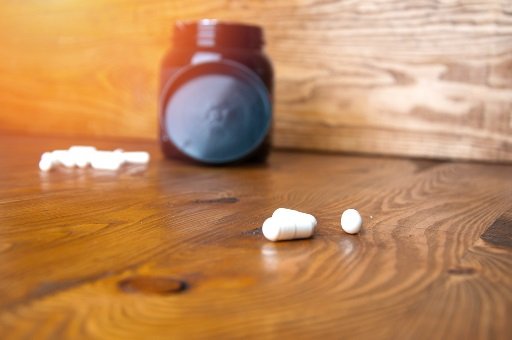Creatine monohydrate, a dietary supplement gaining immense popularity among athletes, bodybuilders, and individuals seeking enhanced physical performance, presents itself as a multifaceted organic compound. Originating naturally within the human body and prevalent in food sources like red meat and fish, it plays a pivotal role in elevating athletic prowess. This supplement bolsters muscle growth, endurance, strength, and power by furnishing muscles with additional energy. Notably, it isn’t confined solely to the realm of physicality; it has garnered attention for its capacity to enhance cognitive function, promote brain health, and combat fatigue.
How Creatine Monohydrate Works
Venturing into the mechanics of Creatine Monohydrate, we uncover the intricacies of its role in the body’s energy ecosystem, rife with synthesis, storage, and the production of adenosine triphosphate (ATP).
Synthesis and Storage in the Body
Creatine monohydrate’s origin story unfolds as three amino acids—arginine, glycine, and methionine—converge to birth a singular molecule. This molecule, in a fateful rendezvous with phosphoric acid, metamorphoses into creatine phosphate—a cache of ATP concealed within muscles, ready to surge forth as an energy reservoir when the need arises. The tale continues: in moments of physical exertion or exercise-induced ATP depletion, creatine monohydrate HK undergoes metamorphosis, yielding adenosine diphosphate (ADP) and a liberated phosphate group—an energy surge, revitalizing muscle contractions.
History & Use
Delving into the annals of history, we uncover the extensive tapestry of supplement usage—a practice spanning centuries, enduring through the ages into the modern era. Our journey embarks on a voyage to explore the historical and contemporary facets of this intriguing realm.
Ancient Uses
Intriguingly, as far back as the 4th century BC, Hippocrates documented the utilization of specific plants for treating ailments, marking an early instance of supplement usage. The ancient Romans, too, exhibited a penchant for herbs, employing them not only for medicinal purposes but also as culinary ingredients. In a faraway land, Traditional Chinese Medicine (TCM) incorporated herbal remedies in tandem with acupuncture and other holistic approaches to nurture health and wellness. Similarly, Ayurvedic medicine, with roots extending over 5,000 years to ancient India, persists as a testament to the enduring legacy of supplements.
Modern Use as a Supplement
Fast forward to the present, where supplements stand as stalwarts in the quest for optimal health and targeted wellness. Beyond the traditional pillars of vitamins and minerals, a cornucopia of options awaits the modern individual. Omega-3 fatty acids, encapsulated in fish oil, join the fray, promising heightened energy levels and muscle gains. Probiotic concoctions like Kombucha tea and protein powders, such as whey, stand ready to cater to diverse health and fitness aspirations. A kaleidoscope of dietary supplements claims to facilitate weight management, stimulate cell rejuvenation, and fortify the immune system. With ingredients ranging from chia seeds to spirulina, the world of supplements teems with possibilities.
Increase in Adenosine Triphosphate Production
The grandeur of Creatine Monohydrate unravels in its profound impact on adenosine triphosphate (ATP) production. As the lifeblood of muscle contractions and a linchpin in diverse physiological functions—ranging from brain activity to nerve transmission—ATP stands as the keystone of vitality. As a supplement, Creatine Monohydrate hastens the replenishment of ATP reserves, infusing the body with renewed vigor.
Side Effects & Safety Considerations
In the labyrinthine realm of pharmaceuticals and supplements, side effects and safety considerations loom as paramount concerns, necessitating comprehensive awareness.
Side Effects & Safety Considerations: What You Need to Know
In the quest for wellness, it remains imperative to acquaint oneself with potential side effects and safety considerations. This knowledge forms the bedrock upon which informed decisions can be made. Side effects, a specter accompanying all drugs, manifest variably—some are immediate, while others slumber, awakening with long-term use or heightened doses. Nausea, vomiting, diarrhea, headaches, dizziness, dry mouth, blurred vision, and blood pressure fluctuations may befall those who tread this path. Although allergic reactions like hives or breathing difficulties loom, they appear less frequently in the tapestry of potential reactions. Vigilance beckons: promptly alert your healthcare provider if worrisome symptoms arise after initiating a new medication, enabling them to fine-tune dosages or explore alternative treatments.
Another layer of complexity unveils itself in the form of drug interactions—engagements with alcohol or over-the-counter allies like ibuprofen and acetaminophen (Tylenol). Such unions heighten the stakes, elevating the risk of grave adverse events.
Conclusion
In summation, the allure of Creatine Monohydrate endures as a safe and efficacious supplement, bolstered by exhaustive studies and embraced by a community spanning athletes and bodybuilders. Its potential to elevate muscle mass, strength, and power stands as a testament to its prowess. Moreover, it extends a hand toward holistic wellness, offering an invaluable companion for those embarking on a journey toward physical and cognitive excellence. In the grand symphony of supplements, Creatine Monohydrate performs as a virtuoso, harmonizing with the aspirations of individuals seeking the pinnacle of performance and vitality.
